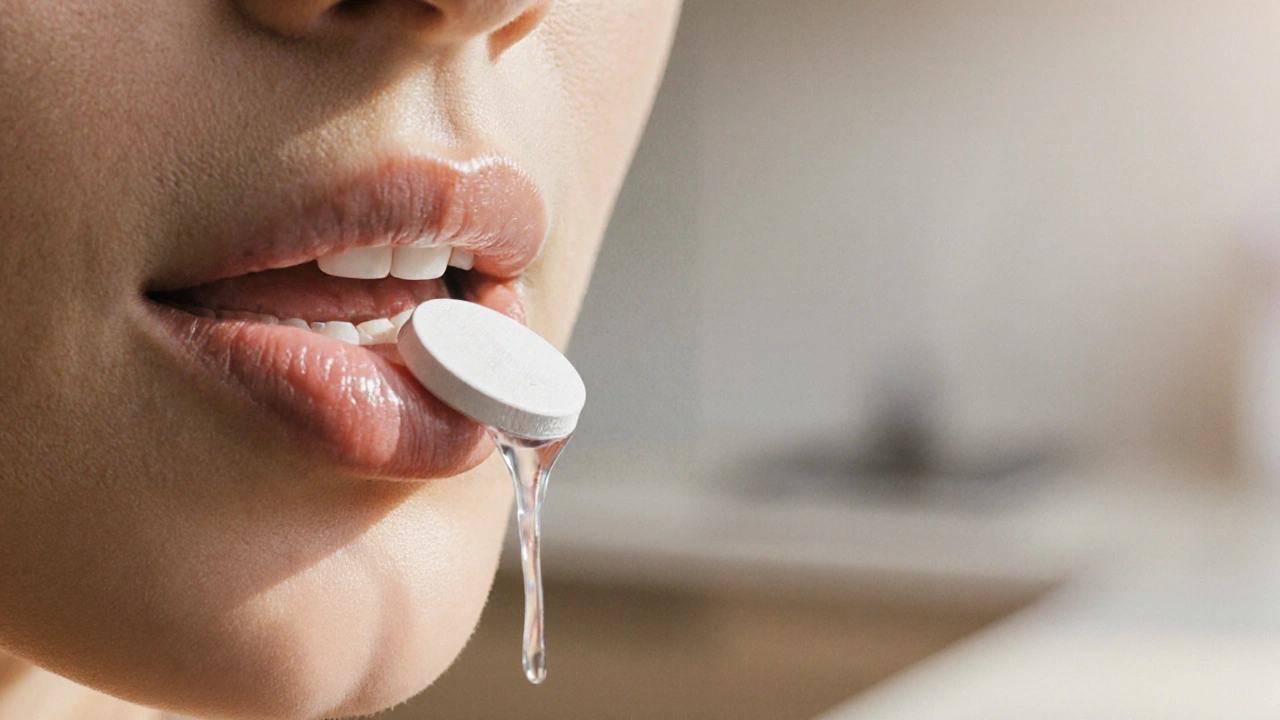Female Erectile Dysfunction – Understanding the Issue
When dealing with female erectile dysfunction, many wonder what’s really going on. It’s defined as female erectile dysfunction, the inability to achieve or sustain sufficient sexual arousal in women. Also known as female sexual arousal disorder, it can stem from physical, hormonal, or psychological sources.
One key factor is hormonal imbalance, disruptions in estrogen, testosterone, or thyroid hormones that regulate libido and blood flow. Hormonal shifts often occur during menopause, thyroid disease, or as a side effect of certain birth‑control pills. When estrogen drops, blood vessels may not relax enough for adequate clitoral engorgement, leading to a dulled response.
Another common trigger is medication side effects, adverse reactions from antidepressants, antihypertensives, or chemotherapy that dampen sexual response. The list of drugs that can blunt arousal is surprisingly long, and recognizing the culprit can open the door to alternatives or dose adjustments. For example, selective serotonin reuptake inhibitors may interfere with neurotransmitters that signal desire.
Stress, anxiety, and relationship issues fall under psychological factors, mental or emotional conditions that interfere with desire and arousal pathways. A therapist can help untangle these threads, often improving sexual confidence alongside physical treatments. Mind‑body techniques such as guided breathing or mindfulness have shown real gains for many women.
Physical health isn’t limited to hormones; the pelvic floor muscles, muscles that support the bladder, uterus, and clitoris play a big role. Weak or overly tight pelvic floor can reduce sensation and blood flow, making arousal difficult. Targeted pelvic‑floor therapy, often involving biofeedback or Kegel‑style exercises, has helped countless patients restore feeling and improve blood circulation.
Common Causes and Practical Steps
Putting these pieces together, female erectile dysfunction encompasses hormonal, drug‑related, psychological, and muscular contributors. A comprehensive evaluation usually starts with a medical history, hormone panels, and a review of current prescriptions. Doctors may also ask about stress levels, sleep quality, and relationship dynamics to spot psychological blockers.
Once the root causes are identified, treatment can be multi‑layered. Hormone replacement therapy may be appropriate for menopausal women with low estrogen or testosterone. For medication‑induced issues, doctors might switch to a different class or lower the dose. Psychological support can include counseling, sex therapy, or stress‑reduction programs.
Physical interventions focus on the pelvic floor and blood flow. Regular pelvic‑floor exercises, warm‑up stretches, and even yoga can improve muscle tone. Some clinics offer low‑intensity shockwave therapy or vaginal moisturizers that enhance tissue health and comfort.
Newer pharmacologic options, like flibanserin or bremelanotide, target brain pathways that control desire. While not suitable for everyone, they provide an alternative when lifestyle changes alone aren’t enough. Always discuss potential side effects and contraindications with a healthcare professional.
Nutrition and overall fitness matter, too. A balanced diet rich in omega‑3 fatty acids, antioxidants, and vitamin D supports vascular health, which is essential for sexual response. Moderate aerobic exercise boosts circulation and can raise natural hormone levels, adding another layer of benefit.
In short, the journey from symptom to solution involves identifying the exact mix of factors that apply to each individual. Whether it’s tweaking a prescription, strengthening the pelvic floor, or addressing emotional blocks, there’s a path forward.
Below you’ll find a curated list of articles that dive deeper into each of these areas—medication safety, hormone health, pelvic‑floor techniques, and more—so you can explore the options that fit your situation best.
Female Cialis Soft (Tadalafil) vs Alternatives: Which Works Best?
- DARREN LLOYD
- 18
A clear, side‑by‑side comparison of Female Cialis Soft (tadalafil) with other PDE5 drugs, hormonal options, and natural supplements, plus guidance on choosing and sourcing the right treatment.
READ MORE
